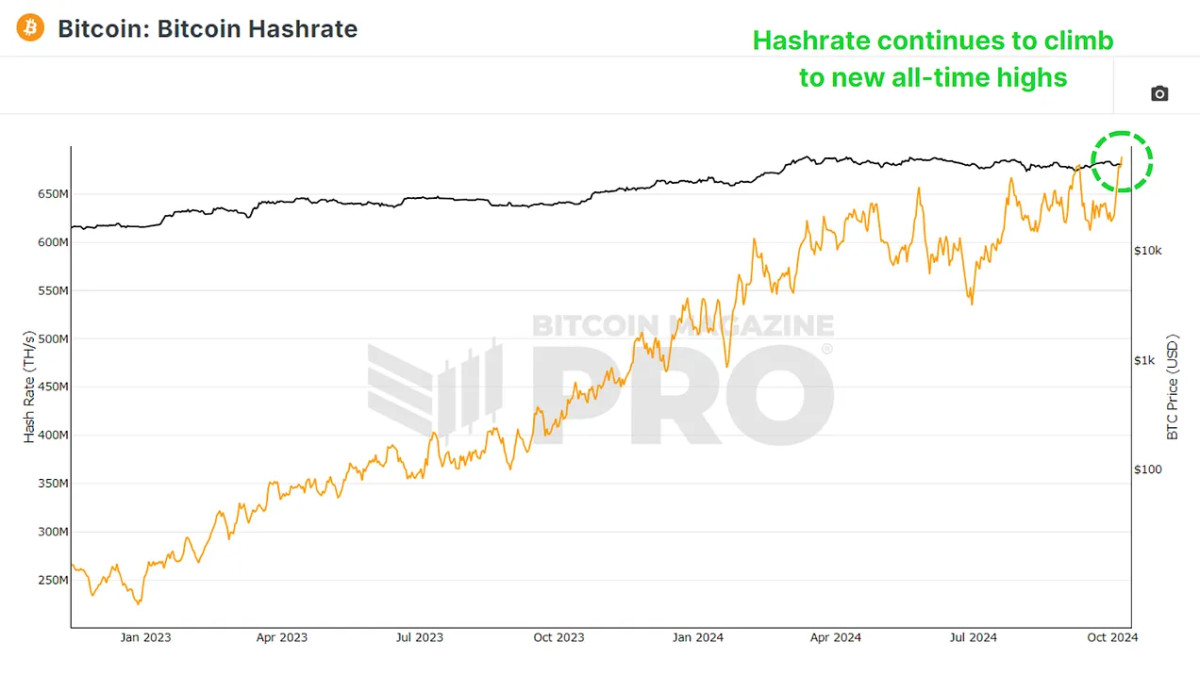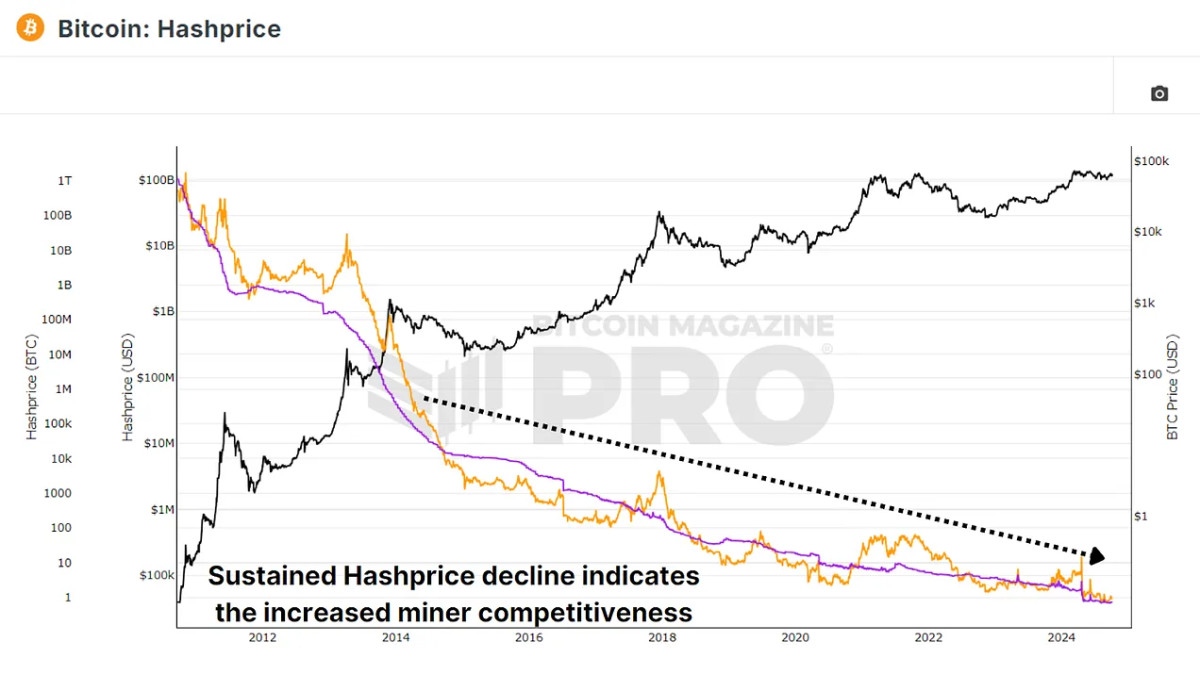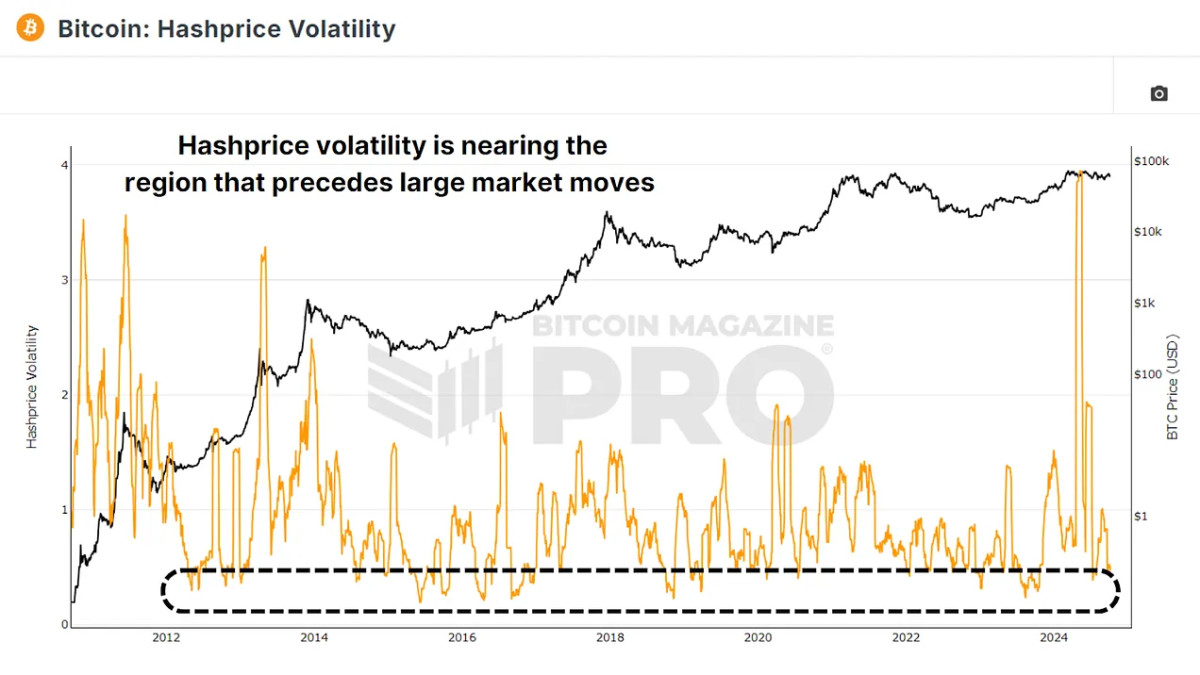Bitcoin miners have always been a reliable indicator of the general sentiment within the market. By tracking their earnings and actions, we can get an idea of where the price of BTC could be heading. In this article, we explore the latest trends in Bitcoin mining, how miners are responding to current market conditions, and what we can learn from key indicators to gauge how Bitcoin miners are positioning themselves in the coming weeks and months.
State of Miners’ Earnings
One of the best ways to assess the sentiment of Bitcoin miners is to examine their earnings in relation to historical data. This can be done using The Puell multiplewhich measures the current earnings of miners compared to the annual average of the previous year.
According to the latest data, the Puell Multiple is hovering around 0.8, which means miners are earning 80% of what they earned on average last year. This is a marked improvement from a few weeks ago when the multiple was just 0.53, indicating miners were earning just over half of last year’s average.

This significant drop earlier this year likely put financial pressure on many miners. Despite these challenges, the fact that the Puell Multiple is recovering suggests that the outlook for miners may be improving.
Hashrate and network growth
Although revenues have fallen, there are no signs of miners leaving the network. In reality, The hashrate of Bitcointhe total computing power used to secure the network has steadily increased. This increase in hashrate indicates that more miners are entering the network or existing miners are upgrading their equipment to compete for block rewards.

However, looking at the Hash Ribbons indicatorwhich tracks the 30-day (blue line) and 60-day (purple line) moving averages of Bitcoin’s hashrate, these two averages have moved closer together, potentially indicating a bearish near-term outlook. Historically, when the 60-day average rises above the 30-day average, it signals miner capitulation, a time when miners, under financial stress, shut down their equipment.

Until we see a bearish crossover, there is no immediate sign of bearishness. One positive is that each time this happens, it is followed by a period of accumulation, which typically precedes a rise in Bitcoin prices. Investors often view these capitulation periods as great opportunities to buy BTC at lower prices.
How much do miners earn?
While we have discussed miners’ income in relation to the price of Bitcoin, another important factor is the Hash pricethe number of BTC or USD miners who can earn for every terahash (TH/s) of computing power they contribute to the network.

Currently, miners earn about 0.73 BTC per terahash, or about $45,000 in USD. This amount has steadily decreased in the months following Bitcoin’s last halving, which saw miners’ block rewards halved, reducing their profitability. Despite these challenges, miners are still increasing their hashrate, indicating that they are betting on a future BTC price increase to compensate for their lower revenue.
One of the most interesting statistics to look at is the Hashish price volatilitywhich tracks how stable or volatile miners’ earnings are over time. Historically, periods of low hash price volatility have preceded significant price movements for Bitcoin. According to the latest data, hash price volatility is starting to decline again, suggesting that we could be approaching a period of substantial price movement for Bitcoin.

Conclusion
Bitcoin miner revenues have fallen compared to the historical average after the halving, but are recovering from a recent significant low. Bitcoin’s hashrate is still rising; This means that miners are putting more computing power into the network despite lower profitability. The hash price continues to decline, but miners remain optimistic, likely due to the expected future price increase. Hash price volatility is falling, which historically indicates that a big move in the price of BTC could be imminent.
Bitcoin miners appear to be optimistic about BTC’s long-term potential despite current challenges. If current metric trends hold, we could be on the cusp of significant price movement, with most indications pointing to a positive outlook.
For a more in-depth look at this topic, watch a recent YouTube video here:
What do Bitcoin miners expect next?
